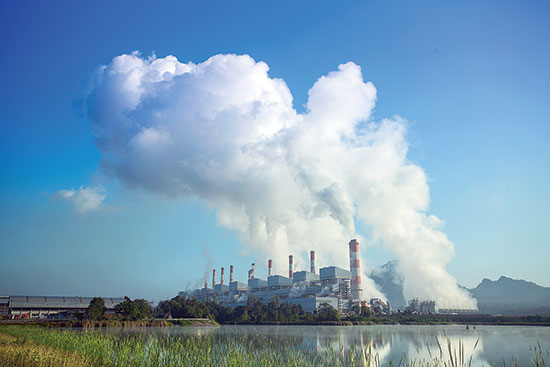Carbon dioxide is the chief cause of climate change. Greenhouse gases are released from long-stored reserves via a variety of human activities, including tillage, deforestation, and the burning of fossil fuels.
Although the gas naturally circulates among the planet’s plants, oceans, and atmosphere, human activities have released carbon dioxide in excess of what natural systems can sequester, causing the sun’s heat to get trapped in the atmosphere. Because of the ill effects of climate change on various ecosystems, the Environmental Protection Agency classified carbon dioxide produced from the burning of fossil fuels as an air pollutant under the Clean Air Act in 2009. Since then, citizens, governments, and private corporations have pushed polluters to pay for their carbon emissions. One “polluter pays” approach to reducing carbon dioxide involves establishing carbon markets.
Governments that participate in the carbon marketplace cap the total amount of carbon dioxide that a state, country, or industry can emit. Industries that rely on burning fossil fuels — including the electricity, automobile, and cement-making sectors — measure and report their emissions by adding up how much fuel they burn in a year and then using estimates for how much carbon is locked up in each type of fuel. A unit of carbon is usually designated as 1 metric ton, or about the amount of carbon produced by driving a medium-sized car from Salt Lake City to New York City. Governments assign a price per ton of carbon and then issue permits up to the annual agreed-upon limit. Companies or governments then buy, sell, and trade these permits with each other based on the amount of carbon dioxide each needs to emit throughout the year. In this way, carbon markets operate much like any other type of market, but as the price of carbon increases, governments will issue fewer permits each year — reducing total carbon emissions over time.
Nearly 40 countries and more than 20 cities, states, and provinces use some kind of carbon-pricing system. Globally, one-quarter of emissions are now priced under a carbon-market scheme, and this is expected to rise. The concept gained momentum last year following the United Nations’ Conference of the Parties meeting, or COP 21, in Paris, where governments from around the globe pledged to take action against climate change.
The Paris Agreement acknowledges that the private sector should play an important role in reducing greenhouse gases. Beyond buying permits, corporations can pay for carbon-reduction projects that reduce carbon emissions, such as planting trees or installing solar panels, and receive “carbon credits” to sell. To this end, big companies are leading some of the largest reduction efforts.
One corporate success story, General Motors’ Chevrolet Carbon-Reduction Initiative, bought and retired carbon credits as a means to engage with consumers who care about climate change. As part of a voluntary initiative that began in 2010, the brand supported 38 carbon-reduction projects in 29 states. The brand retired all the accrued carbon credits to benefit the climate instead of using them to offset emissions of its vehicles or operations.
“At the time, the initiative was the largest voluntary carbon-reduction program. This was not a response to any policy compliance, but recognition that we could help change consumer habits,” says David Tulauskas, director of sustainability at General Motors. Projects included building wind farms, supporting forest and grassland preservation, and launching a program to increase energy efficiency on college campuses. “We worked with 11 universities across America to support their greenhouse-gas-reduction initiatives,” Tulauskas says.
Pricing carbon alone will not halt climate change, but the idea is becoming an integral piece of the solution as it gains support. The Carbon Pricing Leadership Coalition, launched on the first day of COP 21, brings governments together with more than 90 global businesses and nonprofits to expand carbon pricing worldwide. Learn more about the carbon marketplace by visiting Carbon Pricing Leadership.
Kale Roberts is Blogging Coordinator and a former editor of MOTHER EARTH NEWS. He is currently a Rachel Carson Scholar studying Climate Science and Policy at the Bard Center for Environmental Policy in the Hudson Valley, N.Y. His interests include solar power, climate finance, and sustainable rural development. You can find him on Google+.
